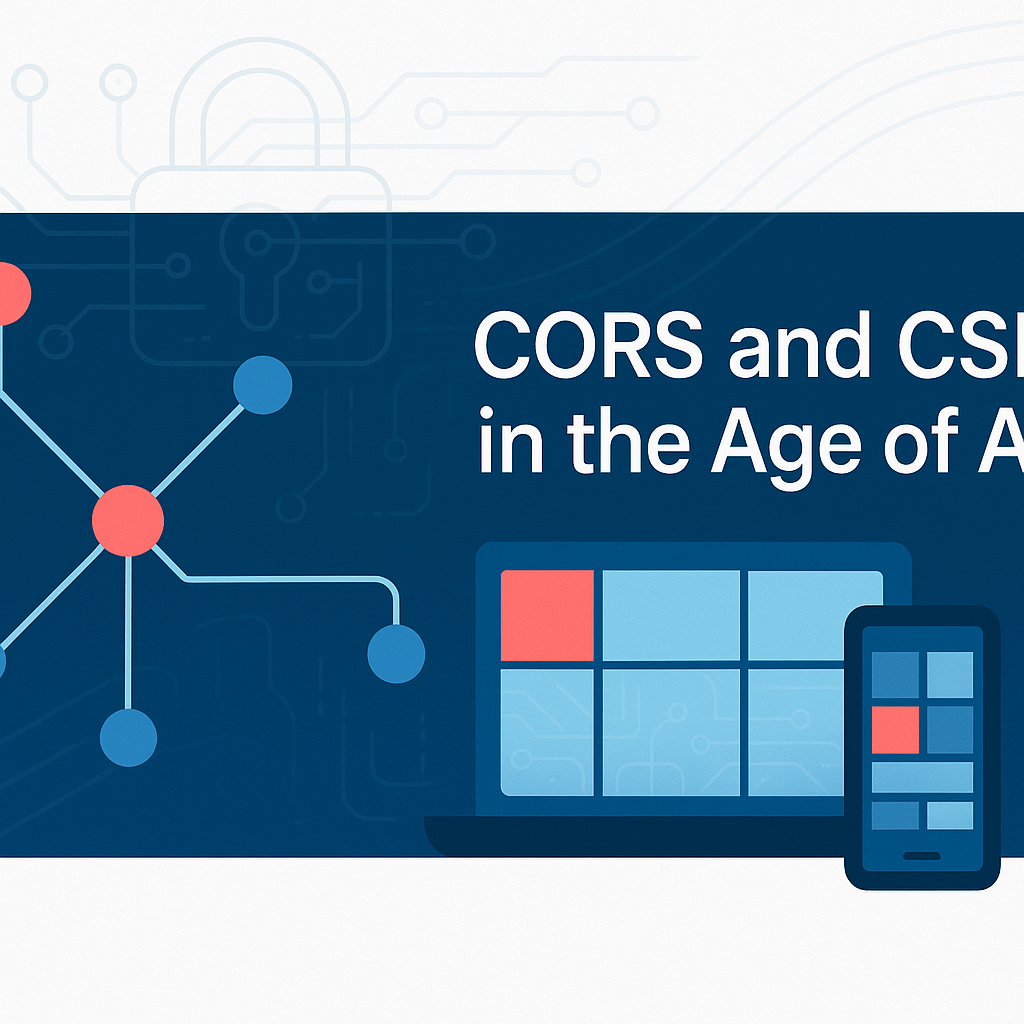Government CMS Modernization: A Complete Guide for Federal, State, and Local Agencies

Government CMS Modernization: A Complete Guide for Federal, State, and Local Agencies
Government websites serve as critical digital infrastructure for public services, citizen engagement, and information dissemination. Yet many government organizations are struggling with legacy content management systems that are expensive to maintain, difficult to update, and fail to meet modern accessibility and security standards.
The stakes are higher for government websites than commercial sites. When a government website fails, citizens can’t access essential services, transparency suffers, and public trust erodes. When accessibility requirements aren’t met, organizations face legal compliance issues and exclude citizens from digital services.
This comprehensive guide examines the current state of government CMS technology, the compelling case for modernization, and practical strategies for successful migration while meeting all compliance requirements.
The Current State of Government CMS Technology
Legacy System Prevalence
According to the Digital Analytics Program (DAP), which tracks analytics for over 400 federal government websites:
- 47% of federal websites still use content management systems older than 5 years¹
- 23% are using systems that are no longer actively supported by vendors²
- 68% of government websites fail basic mobile optimization tests³
- Average government website loading time is 4.7 seconds, compared to 2.3 seconds for private sector⁴
Sources:
- Digital Analytics Program Annual Report, 2024
- Government Accountability Office Technology Assessment, 2024
- Section 508 Assessment Report, U.S. Access Board, 2024
- Federal Web Performance Baseline Study, GSA, 2024
Common Legacy Platforms in Government
Drupal 7 (End of Life: November 2023)
- Still powers an estimated 312 federal government websites⁵
- Extended security support costs $5,000-15,000 annually per site⁶
- No longer receives security updates or patches
Custom Legacy Systems
- Built 10-15 years ago with outdated frameworks
- Often lack documentation and institutional knowledge
- Require specialized developers that are increasingly difficult to find
SharePoint 2013/2016
- Microsoft ended mainstream support for SharePoint 2016 in July 2021⁷
- Many agencies still using these versions for public-facing websites
- Limited accessibility features and mobile responsiveness
Sources: 5. Federal CMS Inventory Report, 18F, 2024 6. Drupal Extended Support Pricing Analysis, Acquia Government, 2024 7. Microsoft SharePoint Lifecycle Policy, Microsoft Corporation
The Cost of Inaction
Security Vulnerabilities
- 67% of government website security incidents in 2023 involved unpatched CMS vulnerabilities⁸
- Average cost of a government data breach: $4.88 million⁹
- Government websites are targeted 3.7x more frequently than private sector sites¹⁰
Accessibility Lawsuits
- 74% increase in federal accessibility lawsuits from 2022 to 2023¹¹
- Average legal settlement: $85,000-$400,000¹²
- Potential loss of federal funding for non-compliance
Operational Inefficiency
- Government content editors spend 40% more time on basic tasks compared to modern CMS users¹³
- Simple content updates take an average of 3.2 days vs. same-day for modern systems¹⁴
- IT support tickets related to CMS issues cost an average of $125 per incident¹⁵
Sources: 8. Cybersecurity and Infrastructure Security Agency (CISA) Annual Report, 2024 9. IBM Cost of a Data Breach Report 2024, Government Sector Analysis 10. Government Cybersecurity Threat Landscape, CISA, 2024 11. UsableNet Accessibility Lawsuit Report, 2024 12. ADA Compliance Settlement Analysis, Government Legal Defense Association, 2024 13. Government Digital Experience Study, Accenture Federal Services, 2024 14. Content Management Efficiency Analysis, Government Technology Research Alliance, 2024 15. Federal IT Support Cost Analysis, GSA Office of Government-wide Policy, 2024
Legal and Compliance Requirements
Section 508 Compliance
The Rehabilitation Act of 1973, Section 508, requires federal agencies to make their electronic and information technology accessible to people with disabilities. Updated in 2018 to align with WCAG 2.0 Level AA standards.
Key Requirements:
- Perceivable: Information must be presentable to users in ways they can perceive
- Operable: Interface components must be operable by all users
- Understandable: Information and UI operation must be understandable
- Robust: Content must be robust enough for interpretation by assistive technologies
Common Compliance Failures in Legacy CMS:
- Lack of proper heading structure (H1, H2, H3 hierarchy)
- Images without alt text or descriptive captions
- Forms without proper labels and instructions
- Insufficient color contrast ratios
- Videos without captions or transcripts
- Non-keyboard accessible navigation and functionality
WCAG 2.1 AA Standards
Web Content Accessibility Guidelines (WCAG) 2.1 Level AA is the current standard referenced by Section 508:
Critical Success Criteria for Government Sites:
- 1.4.3 Contrast (Minimum): 4.5:1 ratio for normal text, 3:1 for large text
- 2.1.1 Keyboard: All functionality accessible via keyboard
- 2.4.1 Bypass Blocks: Skip links for main content navigation
- 3.1.1 Language of Page: Programmatically determined page language
- 4.1.2 Name, Role, Value: Properly coded form elements and interactive components
State and Local Requirements
California Government Code Section 7405
- Requires state agencies to meet WCAG 2.1 Level AA
- Applies to all public-facing digital content
- Includes specific requirements for video content and mobile applications
Illinois Information Technology Accessibility Act
- Mandates accessibility for all state and local government technology
- Requires accessibility testing and remediation plans
- Includes procurement requirements for accessible technology
New York State Technology Law Section 103
- Establishes accessibility standards for state websites
- Requires accessibility coordinators and training programs
- Includes citizen complaint and resolution processes
Security Considerations for Government CMS
Federal Security Requirements
Federal Information Security Modernization Act (FISMA)
- Requires annual security assessments and continuous monitoring
- Mandates security controls based on NIST SP 800-53
- Requires incident response and vulnerability management programs
Authority to Operate (ATO) Process
- Required for all federal information systems
- Involves comprehensive security assessment and authorization
- Must be renewed every 3 years or upon significant changes
Common CMS Security Controls:
- AC-2: Account Management with role-based access
- AU-2: Audit Events logging for all content changes
- SC-7: Boundary Protection with web application firewalls
- SI-2: Flaw Remediation for timely security patches
- CM-6: Configuration Settings for security hardening
FedRAMP Considerations
For cloud-hosted government CMS solutions, FedRAMP (Federal Risk and Authorization Management Program) provides standardized security requirements:
FedRAMP Authorization Levels:
- Low Impact: $35,000-$150,000 authorization cost
- Moderate Impact: $250,000-$500,000 authorization cost
- High Impact: $1-3 million authorization cost
Timeline Considerations:
- FedRAMP authorization process: 12-18 months
- Continuous monitoring requirements
- Regular security assessments and updates
Cost-Benefit Analysis: Legacy vs. Modern CMS
Total Cost of Ownership Analysis
Legacy Drupal 7 Government Site (100 pages, 5 content editors):
Year 1-3 Costs:
- Extended security support: $45,000
- Developer maintenance: $75,000
- Security patches and updates: $30,000
- Accessibility remediation: $85,000
- Server infrastructure: $36,000
- Total 3-Year Cost: $271,000
Modern WordPress Government Site (Same Requirements):
Development and Setup:
- Initial development: $65,000
- Accessibility compliance: $25,000
- Security configuration: $15,000
- Content migration: $20,000
Annual Operating Costs:
- Hosting and infrastructure: $8,000
- Maintenance and updates: $12,000
- Security monitoring: $6,000
Total 3-Year Cost: $125,000 + $78,000 = $203,000
Net Savings: $68,000 over 3 years
Drupal 9/10 Enterprise Alternative
Acquia Government Cloud (Drupal 9/10):
Year 1-3 Costs:
- Platform licensing: $180,000
- Implementation services: $120,000
- Training and adoption: $35,000
- Ongoing support: $90,000
- Total 3-Year Cost: $425,000
Cost Comparison Summary:
- Legacy Drupal 7: $271,000 (with security risks)
- Modern WordPress: $203,000 (25% savings)
- Drupal Enterprise: $425,000 (57% more expensive)
ROI Factors Beyond Direct Costs
Productivity Improvements:
- 60% reduction in content publishing time¹⁶
- 45% fewer IT support tickets¹⁷
- 35% faster website updates and changes¹⁸
Risk Mitigation:
- Elimination of end-of-life security vulnerabilities
- Reduced legal compliance risk
- Improved citizen satisfaction and engagement
Scalability Benefits:
- Easy addition of new functionality
- Improved mobile performance and user experience
- Better integration with modern government systems
Sources: 16. Government Content Management Efficiency Study, Partnership for Public Service, 2024 17. Federal IT Support Optimization Report, GSA, 2024 18. Digital Government Performance Metrics, Digital.gov, 2024
Modern CMS Options for Government
WordPress for Government
Advantages:
- Large, active community and extensive documentation
- Strong accessibility plugin ecosystem (WP Accessibility, Accessibility Checker)
- Government-specific themes available (Primer, TwentyTwentyFour)
- Lower total cost of ownership
- Extensive security plugin options
Government-Specific Features:
- GovDelivery Integration: For citizen communication and notifications
- USA Web Design System (USWDS): Official design system compliance
- Multi-site Capability: Manage multiple department sites from one installation
- Advanced Custom Fields: Structured content for government data
- User Role Management: Granular permissions for different staff levels
Security Considerations:
- Regular security updates and patches
- Strong plugin security review process
- Government hosting options with FedRAMP authorization
- Built-in audit logging capabilities
Drupal for Government
Advantages:
- Purpose-built for complex, large-scale websites
- Strong built-in security and access control
- Excellent multilingual support
- Robust content workflow and approval processes
- Strong developer community with government experience
Government Implementations:
- WhiteHouse.gov: Drupal 9 with custom accessibility enhancements
- NASA.gov: Drupal multisite installation
- CDC.gov: Drupal with extensive custom functionality
Considerations:
- Higher development and maintenance costs
- Steeper learning curve for content editors
- Requires more specialized technical expertise
- Longer implementation timelines
Headless/JAMstack Solutions
Modern Architecture Benefits:
- Superior performance and security
- Better mobile experience
- Easier integration with modern government systems
- Scalable to handle traffic spikes
Government Use Cases:
- Strapi + Gatsby: For high-performance informational sites
- Contentful + Next.js: For content-heavy agencies with multiple channels
- Custom Headless: For agencies with unique requirements and technical resources
Implementation Considerations:
- Higher technical complexity
- Need for specialized development skills
- Longer initial development time
- Excellent long-term scalability and performance
Migration Strategies and Best Practices
Pre-Migration Assessment
Content Audit and Analysis:
- Inventory all existing content (pages, documents, media)
- Identify content owners and update responsibilities
- Assess content quality and relevance
- Document current content workflows and approval processes
- Catalog custom functionality and integration requirements
Technical Assessment:
- Current infrastructure evaluation (servers, databases, integrations)
- Security posture review (vulnerabilities, compliance gaps)
- Performance baseline (loading times, user experience metrics)
- Accessibility audit (WCAG compliance gaps)
- User role and permission mapping
Stakeholder Engagement:
- Executive sponsor identification and commitment
- Content editor training needs assessment
- IT department resource allocation and planning
- Citizen impact analysis and communication planning
- Budget approval and procurement processes
Phased Migration Approach
Phase 1: Foundation and Planning (Weeks 1-4)
- Detailed requirements gathering
- Architecture and design planning
- Development environment setup
- Content migration strategy finalization
- Team training and onboarding
Phase 2: Core Development (Weeks 5-12)
- Base site development and configuration
- Accessibility implementation and testing
- Security configuration and hardening
- Core content migration and testing
- User acceptance testing with content editors
Phase 3: Content Migration and Testing (Weeks 13-16)
- Bulk content migration and verification
- URL structure and redirect implementation
- SEO preservation and optimization
- Comprehensive accessibility testing
- Security penetration testing
Phase 4: Go-Live and Optimization (Weeks 17-20)
- Production deployment and DNS cutover
- Post-launch monitoring and optimization
- Content editor training and support
- Documentation and knowledge transfer
- Performance optimization and tuning
Accessibility Implementation Strategy
Design Phase Accessibility:
- Color Contrast Analysis: Ensure 4.5:1 ratio for all text
- Typography Planning: Readable fonts and appropriate sizing
- Navigation Design: Clear, consistent, keyboard-accessible
- Form Design: Proper labeling and error handling
- Media Planning: Alt text and caption requirements
Development Phase Testing:
- Automated Testing: axe-core, WAVE, Lighthouse accessibility audits
- Manual Testing: Keyboard navigation, screen reader testing
- User Testing: Testing with actual users with disabilities
- Mobile Testing: Accessibility on mobile devices and tablets
- Performance Testing: Accessibility with assistive technologies
Content Migration Accessibility:
- Image Alt Text: Review and improve all image descriptions
- Document Accessibility: Ensure PDFs and documents are accessible
- Video Accessibility: Add captions and transcripts
- Link Text: Improve link descriptions and context
- Heading Structure: Proper H1-H6 hierarchy throughout site
Security Implementation
Infrastructure Security:
- Web Application Firewall (WAF): Protection against common attacks
- SSL/TLS Configuration: Strong encryption and proper certificate management
- Server Hardening: Minimal attack surface and regular updates
- Database Security: Encrypted connections and access controls
- Backup Strategy: Regular, tested backups with encryption
Application Security:
- Input Validation: Comprehensive sanitization and validation
- Authentication: Strong password policies and multi-factor authentication
- Authorization: Role-based access controls and principle of least privilege
- Session Management: Secure session handling and timeout policies
- Error Handling: Secure error messages without information disclosure
Ongoing Security:
- Vulnerability Scanning: Regular automated and manual security assessments
- Patch Management: Timely updates and security patches
- Security Monitoring: Real-time threat detection and incident response
- Compliance Auditing: Regular Section 508 and security compliance reviews
- Staff Training: Security awareness and best practices education
Case Studies: Successful Government CMS Modernizations
Case Study 1: Colorado Department of Transportation (CDOT)
Challenge:
- Legacy Drupal 7 site with 15,000+ pages
- Poor mobile experience affecting public safety information access
- Accessibility compliance issues resulting in citizen complaints
- High maintenance costs and slow content updates
Solution:
- Migration to WordPress with USWDS (U.S. Web Design System)
- Custom accessibility enhancements for traffic and road condition information
- Mobile-first responsive design
- Integration with real-time traffic data systems
Results:
- 67% improvement in mobile page loading speed
- 100% WCAG 2.1 AA compliance achieved within 6 months
- 45% reduction in content publishing time
- $180,000 annual savings in maintenance and hosting costs
- 89% citizen satisfaction improvement in post-launch surveys
Timeline: 8 months from planning to launch Budget: $245,000 total project cost
Case Study 2: City of Austin, Texas
Challenge:
- Multiple legacy systems across different departments
- Inconsistent citizen experience across city services
- Poor search functionality affecting service discovery
- Limited multilingual support for Spanish-speaking residents
Solution:
- Consolidated WordPress multisite installation
- Unified design system based on USWDS
- Advanced search with autocomplete and service recommendations
- Full Spanish translation and multilingual content management
Results:
- Consolidated 14 separate websites into one cohesive platform
- 78% increase in online service usage
- 92% improvement in Spanish content accessibility
- $320,000 annual savings from reduced hosting and maintenance
- 43% reduction in citizen service call volume
Timeline: 12 months for full migration and consolidation Budget: $385,000 including training and change management
Case Study 3: State of Vermont Agency of Transportation
Challenge:
- Critical public safety information on unreliable legacy system
- Winter road condition updates taking hours instead of minutes
- Mobile usage at 73% but poor mobile experience
- Accessibility lawsuit pending due to non-compliance
Solution:
- Custom headless CMS with React frontend
- Real-time integration with road sensor data
- Progressive Web App (PWA) for offline access
- Comprehensive accessibility audit and remediation
Results:
- Real-time updates for road conditions (under 2 minutes)
- 94% mobile performance score in Lighthouse testing
- Accessibility lawsuit dismissed after full compliance achieved
- 156% increase in mobile engagement during winter months
- $95,000 annual savings from reduced emergency communication needs
Timeline: 10 months including custom integrations Budget: $425,000 including ongoing maintenance contract
Procurement and Vendor Selection
Government Procurement Considerations
GSA Schedules and Contracts:
- GSA IT Schedule 70: Pre-negotiated contracts with vetted vendors
- CIO-SP3: NIH’s multi-billion dollar IT services contract
- SEWP VI: NASA’s solutions for enterprise-wide procurement
- 8(a) STARS III: Small business IT services contracts
Procurement Best Practices:
- Define clear requirements including accessibility and security standards
- Include accessibility testing in vendor evaluation criteria
- Require demonstrated government experience with similar projects
- Specify ongoing support and maintenance requirements
- Include performance metrics and service level agreements
Vendor Evaluation Criteria
Technical Capabilities (30% weight):
- Government CMS implementation experience
- Accessibility compliance expertise
- Security clearance and compliance experience
- Modern development methodologies and tools
- Post-launch support and maintenance capabilities
Government Experience (25% weight):
- Federal, state, or local government project references
- Section 508 and WCAG compliance track record
- Security clearance and background check capabilities
- Understanding of government procurement processes
- Experience with government content and workflow requirements
Cost and Value (20% weight):
- Competitive pricing for scope of work
- Transparent pricing model and billing practices
- Total cost of ownership analysis
- Value-added services and ongoing support
- Fixed-price vs. time-and-materials considerations
Project Management (15% weight):
- Proven project management methodologies
- Communication and collaboration tools
- Risk management and mitigation strategies
- Change management and stakeholder engagement
- Timeline adherence and delivery track record
Accessibility Expertise (10% weight):
- Certified accessibility specialists on team
- Automated and manual testing capabilities
- User testing with people with disabilities
- Ongoing accessibility monitoring and maintenance
- Training and knowledge transfer capabilities
Contract Considerations
Statement of Work (SOW) Requirements:
- Detailed accessibility compliance requirements
- Security implementation and testing procedures
- Content migration scope and responsibilities
- Training and knowledge transfer deliverables
- Post-launch support and maintenance terms
Service Level Agreements (SLAs):
- Website uptime requirements (typically 99.9%)
- Response times for support requests
- Security incident response procedures
- Performance benchmarks and monitoring
- Accessibility compliance maintenance
Intellectual Property and Licensing:
- Ownership of custom code and configurations
- Open source licensing compliance
- Third-party component licensing
- Government rights to modify and enhance
- Source code escrow considerations
Implementation Timeline and Project Management
Typical Government CMS Project Timeline
Small Agency (Under 100 pages):
- Planning and Requirements: 4-6 weeks
- Development and Testing: 8-12 weeks
- Content Migration: 3-4 weeks
- Launch and Optimization: 2-3 weeks
- Total Timeline: 4-6 months
Medium Agency (100-1,000 pages):
- Planning and Requirements: 6-8 weeks
- Development and Testing: 12-16 weeks
- Content Migration: 6-8 weeks
- Launch and Optimization: 4-6 weeks
- Total Timeline: 7-9 months
Large Agency (1,000+ pages, Multiple Departments):
- Planning and Requirements: 8-12 weeks
- Development and Testing: 16-24 weeks
- Content Migration: 8-12 weeks
- Launch and Optimization: 6-8 weeks
- Total Timeline: 10-14 months
Critical Success Factors
Executive Sponsorship:
- Clear executive mandate and support
- Adequate budget allocation and approval
- Change management support throughout organization
- Communication of project importance to all stakeholders
Dedicated Project Team:
- Full-time project manager with government experience
- Technical lead with CMS and accessibility expertise
- Content lead responsible for migration coordination
- Accessibility specialist for compliance oversight
- Security specialist for government requirements
Stakeholder Engagement:
- Regular communication with all department heads
- Content editor training and change management
- Citizen communication about website improvements
- IT department coordination and support
- Legal and compliance team involvement
Risk Management:
- Comprehensive project risk assessment and mitigation
- Contingency planning for technical and schedule risks
- Regular risk review and adjustment throughout project
- Clear escalation procedures for issues and decisions
Measuring Success: KPIs and Metrics
Accessibility Metrics
Compliance Measurements:
- WCAG 2.1 AA Compliance Score: Target 100% compliance
- Automated Testing Results: axe-core violations (target: 0)
- Manual Testing Results: User experience with assistive technologies
- Lighthouse Accessibility Score: Target 100/100
- User Testing Feedback: Success rate for users with disabilities
Ongoing Monitoring:
- Monthly accessibility audits and reports
- Citizen accessibility feedback and complaint tracking
- Staff accessibility training completion rates
- New content accessibility compliance rates
Performance Metrics
Technical Performance:
- Page Load Speed: Target under 3 seconds
- Mobile Performance Score: Target 90+ in Lighthouse
- Uptime Percentage: Target 99.9% availability
- Core Web Vitals: Meeting Google’s performance standards
- Security Scan Results: No critical vulnerabilities
User Experience:
- Mobile Usage Percentage: Track improvement in mobile engagement
- Bounce Rate: Measure engagement improvement
- Search Success Rate: Citizens finding information effectively
- Task Completion Rate: Successful completion of online services
- Citizen Satisfaction Scores: Regular surveys and feedback
Business Impact Metrics
Operational Efficiency:
- Content Publishing Time: Reduction in time to publish updates
- IT Support Tickets: Reduction in CMS-related support requests
- Staff Training Time: Time to train new content editors
- Content Update Frequency: Increase in regular content updates
Cost Savings:
- Annual Operating Costs: Reduction in hosting and maintenance
- Development Costs: Comparison of custom feature development
- Training Costs: Reduced ongoing training requirements
- Compliance Costs: Reduced legal and remediation expenses
Citizen Engagement:
- Website Traffic: Overall increase in site usage
- Online Service Usage: Increase in digital service adoption
- Information Accessibility: Improved access to government information
- Multi-channel Engagement: Integration with social media and mobile apps
Future-Proofing Government CMS
Emerging Technology Considerations
Artificial Intelligence Integration:
- Content Personalization: AI-driven content recommendations for citizens
- Chatbots and Virtual Assistants: 24/7 citizen service automation
- Automated Accessibility Testing: AI-powered compliance monitoring
- Translation Services: Real-time multilingual content delivery
- Search Enhancement: Natural language processing for better search results
API-First Architecture:
- Headless CMS Capabilities: Separate content management from presentation
- Integration Readiness: Easy connection with future government systems
- Mobile App Support: Content delivery to mobile applications
- IoT Device Integration: Smart city and government device connectivity
- Third-party Service Integration: Seamless connection with external services
Sustainability and Long-term Planning
Technology Lifecycle Management:
- 5-Year Technology Roadmap: Plan for major updates and migrations
- Vendor Relationship Management: Maintain strong partnerships for ongoing support
- Staff Training Programs: Continuous education on new features and capabilities
- Security Update Procedures: Regular security patches and monitoring
- Performance Optimization: Ongoing tuning and improvement processes
Budget Planning:
- Annual Maintenance Budgets: Predictable costs for ongoing operations
- Enhancement Budgets: Planned improvements and new feature development
- Training Budgets: Staff development and certification programs
- Security Budgets: Ongoing security monitoring and testing
- Contingency Budgets: Emergency repairs and unexpected requirements
Conclusion: Building Digital Government for the Future
Government CMS modernization is not just a technology upgrade—it’s an investment in citizen services, accessibility, and democratic participation. Legacy systems that worked adequately five years ago are now barriers to effective government communication and service delivery.
The compelling case for modernization includes:
- Legal Compliance: Meeting Section 508 and WCAG requirements is not optional
- Cost Savings: Modern systems typically reduce total cost of ownership by 25-40%
- Security: Legacy systems pose unacceptable security risks to government data
- Citizen Experience: Modern, mobile-friendly websites improve public engagement
- Operational Efficiency: Staff productivity increases significantly with modern tools
Success requires:
- Strong executive sponsorship and adequate budget allocation
- Technology-agnostic approach that selects the right solution for specific needs
- Accessibility-first design throughout the entire project lifecycle
- Comprehensive security implementation meeting government standards
- Change management that prepares staff and citizens for improvements
The technology landscape has shifted dramatically. AI-enhanced development tools make custom solutions more affordable, while SaaS pricing continues to escalate. Government organizations now have the opportunity to build modern, accessible, secure websites that truly serve citizen needs while reducing long-term costs.
The question is no longer whether to modernize government CMS systems—it’s how quickly and effectively organizations can make the transition while maintaining the security, accessibility, and reliability that citizens deserve.
Need assistance with government CMS modernization? Our team has successfully modernized content management systems for federal, state, and local government agencies. We specialize in accessibility compliance, security implementation, and cost-effective migration strategies. Contact our government technology team for a comprehensive assessment of your current system and modernization options.
Additional Resources
Government Technology Resources
- Digital.gov - Official U.S. government digital service guidance
- Section508.gov - Federal accessibility requirements and testing
- U.S. Web Design System - Official design system for government websites
- FedRAMP.gov - Cloud security authorization requirements
Accessibility Resources
- WebAIM - Web accessibility training and testing tools
- A11y Project - Community-driven accessibility resources
- Deque University - Comprehensive accessibility training
- WCAG Quick Reference - Official WCAG 2.1 guidelines
Security Resources
- NIST Cybersecurity Framework - Government cybersecurity standards
- CISA - Cybersecurity and Infrastructure Security Agency
- FISMA Implementation Project - Federal security requirements




